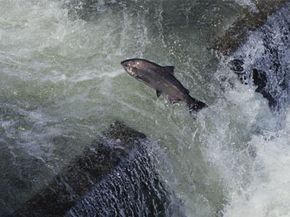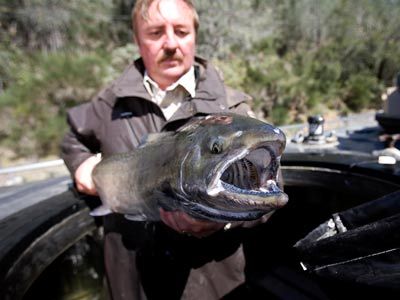Imagine you're driving down the road when you encounter massive construction. Huge roadblocks are everywhere, and there's not a detour sign in sight. You're unfamiliar with this part of town, so you don't know any alternate routes; worse yet, there doesn't seem to be a side road that you could take even if you did know where you were going. Other drivers are confused as well, so that before long, there's a massive backup of traffic. What are you going to do? You have to reach your final destination, but there seems to be no way around the construction scene.
While any roadway construction can be inconvenient, it's unlikely that such a dire and nightmarish situation could completely block motorists. In the process of planning roadway construction, cities and states plan for warning signs, detour routes and perhaps even on-site traffic officers to aid the drivers. And yet, this scenario is very real for fish.
Advertisement
While we may think of fish as creatures with the ability to swim about constantly, most species make only two really significant journeys in their lives. The first is shortly after birth, when fish move away from their spawning grounds, and the second occurs when the fish return to the spawning area to breed and die. When the world was undeveloped, the only threats to these journeys might have been bigger predators and fishermen, but now, fish face huge barriers and obstructions in the form of dams. If they can't get back to the spawning grounds, then fish populations dramatically decrease.
That's where fish ladders come in (you may also hear them referred to as fish passages or fishways). Fish ladders provide a detour route for migrating fish so that they can get over or around a dam that's blocking the way. That sounds easy enough, but when you try to visualize such a contraption, you may have funny images in your head. How could a fish make it up the rungs of a ladder? Try picturing this instead: a series of ascending pools that are reached not by climbing rungs, but by swimming against a stream of water. The fish leap through the cascade of rushing water, rest in the pool and then repeat the process until they're beyond the dam.
On the next page, we'll talk more about the different types of fish ladder and how they're designed.
Advertisement




